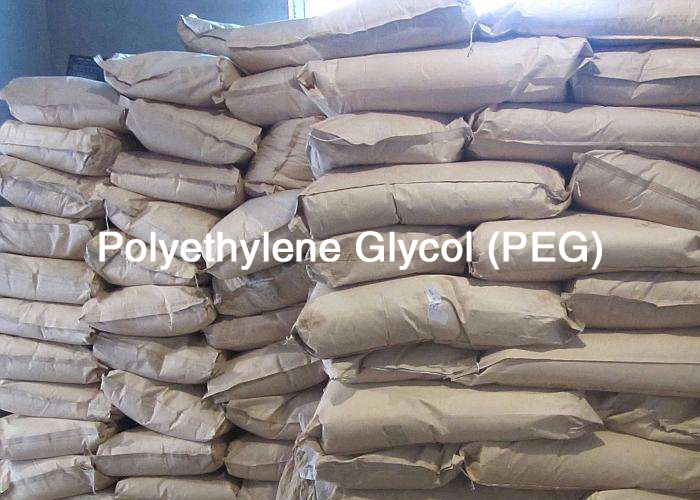New Trends of Polyethylene Glycol (PEG) in the Textile Auxiliary Industry in 2025
If you are looking for a stable, versatile raw material for textile auxiliaries in 2025, Polyethylene Glycol (PEG) is a proven choice. As a water-soluble polymer, PEG offers excellent lubricity, softness, and moisture retention—making it ideal for textile dyeing, finishing, and softening processes.
With adjustable molecular weights, Polyethylene Glycol PEG can be tailored for both pre-treatment and post-finishing, giving fabrics unique handfeel and performance. Leading suppliers like East Chemical are launching high-purity Polyethylene Glycol PEG products to help textile mills improve efficiency and product quality.
Key Highlights
Polyethylene Glycol enhances fabric softness, antistatic properties, and moisture absorption.
Different molecular weights for different uses:
Low molecular weight PEG → wetting agents & dispersants
High molecular weight PEG → softeners & coating auxiliaries
Excellent water solubility for compatibility with various textile chemicals.
Safe, non-toxic, compliant with textile chemical regulations in multiple countries.
Reliable suppliers ensure stability under high temperature, high salt, or strong alkali conditions.
Best Applications of high-purity Polyethylene Glycol PEG in the Textile Industry
Top Choices in 2025
Softener Base
High-MW PEG improves handfeel, drape, and wash durability.Dyeing Wetting Agent
Low-MW PEG penetrates fibers quickly, ensuring uniform dye uptake and reducing shade variation.Antistatic Agent
PEG absorbs moisture, reducing static build-up in synthetic fibers.Sizing Additive
Enhances flexibility and release of synthetic size films, reducing warp breakage.
Tip:
Small to medium mills may choose powder or flake PEG for easy dosing.
Large-scale textile chemical plants can opt for liquid or high-MW solid PEG for automated systems.
Why PEG Stands Out
High Compatibility with surfactants, resins, emulsions.
Stable Performance even in high-temperature, alkaline, or saline conditions.
Customizable molecular weight from 200 to 20,000 for varied textile processes.
Common high-purity Polyethylene Glycol PEG Specifications for Textile Applications
| Application | MW Range | Key Properties | Features |
|---|---|---|---|
| Wetting/penetrating | 200–1000 | High fluidity, quick dissolution | Ideal for pre-treatment, even dyeing |
| Softener | 4000–8000 | Soft hand, wash durability | Can be combined with silicone |
| Coating additive | 10000–20000 | Flexibility, film formation | For functional fabrics |
| Antistatic | 200–4000 | Moisture retention, reduced friction | Ideal for synthetic fiber finishing |
Beginner’s Guide
For beginners in textile auxiliaries, start with versatile high-purity Polyethylene Glycol PEG in the 400–2000 MW range. This liquid form dissolves easily, serving as both a wetting agent and antistatic base.
Recommended Grades:
PEG-400: Excellent solubility, ideal for dyeing wetting agents
PEG-1000: Suitable for softeners & crease-resistant finishes
PEG-2000: High wash durability for post-finishing
Professional Applications
Large textile mills and export-oriented manufacturers may prefer high-purity Polyethylene Glycol PEG with MW above 8000 for high-end functional fabrics such as waterproof-breathable garments or antimicrobial bedding. These high-MW PEG grades improve coating density and durability.
Popular Grades:
PEG-6000: For high-wash-resistant soft finishing
PEG-10000: Improves coating elasticity and adhesion
PEG-20000: For specialty coatings on functional fabrics
Budget-Friendly Choices
| Grade | Performance | Cost Advantage |
|---|---|---|
| PEG-400 | Fast wetting, high fluidity | Low cost, easy sourcing |
| PEG-1000 | Soft feel, anti-crease | Great price-performance |
| PEG-1500 | Multi-purpose, high compatibility | Standard textile grade |
Key Factors When Buying PEG
| Factor | Description | Recommendation |
|---|---|---|
| Molecular Weight | Determines performance & use | Low MW for pre-treatment, high MW for finishing |
| Purity | Reduces residue, improves safety | ≥99% industrial or pharma grade |
| Form | Flake, powder, liquid | Match with dosing system |
| Supplier | Stability & technical support | Choose certified manufacturers |
Storage & Handling
Keep dry to prevent moisture absorption and caking
Avoid direct sunlight and high heat
Liquid PEG may crystallize in low temperatures—heat to 60°C to restore
Check packaging seal to prevent contamination
Conclusion
Choosing the right Polyethylene Glycol (PEG) can optimize textile processing efficiency and significantly enhance final product quality. With stable supply chains and technical support, companies like East Chemical provide customized PEG solutions for textile manufacturers of all sizes—helping production become more efficient and eco-friendly.